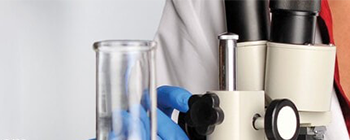Learn More
CD4 Monoclonal Antibody (YKIX302.9), PE-Cyanine7, eBioscience™, Invitrogen™
Rat Monoclonal Antibody
Supplier: Invitrogen 25504042
Description
Description: The YKIX302.9 monoclonal antibody reacts with canine CD4, a cell surface receptor expressed on a majority of thymocytes, a subpopulation of mature T cells and dendritic cells. In dogs, CD4 is also highly expressed on neutrophils. CD4 binds to MHC class II on the surface of antigen presenting cells and plays an important role in T cell development and homeostasis. This YKIX302.9 monoclonal antibody has been reported to block MHC II-restricted T cell responses in vivo and in vitro. Applications Reported: This YKIX302.9 antibody has been reported for use in flow cytometric analysis. Applications Tested: This YKIX302.9 antibody has been pre-titrated and tested by flow cytometric analysis of normal canine peripheral blood cells. This can be used at 5 µL (0.06 µg) per test. A test is defined as the amount (µg) of antibody that will stain a cell sample in a final volume of 100 µL. Cell number should be determined empirically but can range from 10^5 to 10^8 cells/test. Light sensitivity: This tandem dye is sensitive photo-induced oxidation. Please protect this vial and stained samples from light. Fixation: Samples can be stored in IC Fixation Buffer (cat. 00-8222) (100 µL cell sample + 100 µL IC Fixation Buffer) or 1-step Fix/Lyse Solution (cat. 00-5333) for up to 3 days in the dark at 4°C with minimal impact on brightness and FRET efficiency/compensation.
Some generalizations regarding fluorophore performance after fixation can be made, but clone specific performance should be determined empirically. Excitation: 488-561 nm; Emission: 775 nm; Laser: Blue Laser, Green Laser, Yellow-Green Laser. Filtration: 0.2 μm post-manufacturing filtered. The CD4 antigen is involved in the recognition of MHC class II molecules and is a co-receptor for HIV. CD4 is primarily expressed in a subset of T-lymphocytes, also referred to as T helper cells, but may also be expressed by other cells in the immune system, such as monocytes, macrophages, and dendritic cells. At the tissue level, CD4 expression may be detected in thymus, lymph nodes, tonsils, and spleen, and also in specific regions of the brain, gut, and other non-lymphoid tissues. CD4 functions to initiate or augment the early phase of T-cell activation through its association with the T-cell receptor complex and protein tyrosine kinase, Lck. It may also function as an important mediator of direct neuronal damage in infectious and immune-mediated diseases of the central nervous system. Multiple alternatively spliced transcripts have been identified in this gene [RefSeq, July 2017].Specifications
| CD4 | |
| Monoclonal | |
| 5 μL/Test | |
| PBS with 0.1% gelatin, 0.2% BSA and 0.09% sodium azide; pH 7.2 | |
| P33705 | |
| CD4 | |
| Affinity chromatography | |
| RUO | |
| 403931 | |
| 4° C, store in dark, DO NOT FREEZE! | |
| Liquid |
| Flow Cytometry | |
| YKIX302.9 | |
| PE-Cyanine7 | |
| CD4 | |
| CD4 antigen p55, CD4 receptor, T-cell surface antigen T4/Leu-3, T-cell surface glycoprotein CD4 | |
| Rat | |
| 100 Tests | |
| Primary | |
| Canine | |
| Antibody | |
| IgG2a κ |
For Research Use Only.



